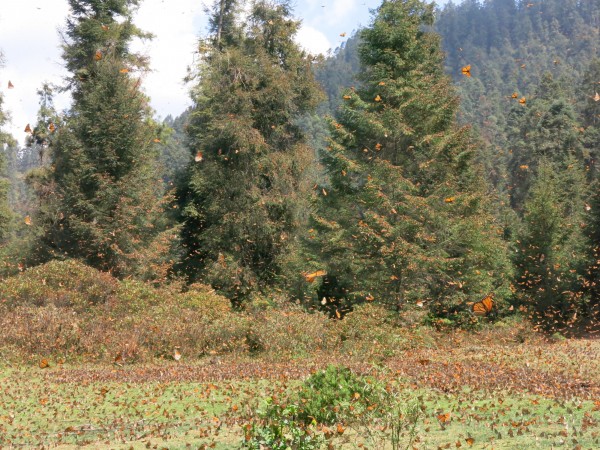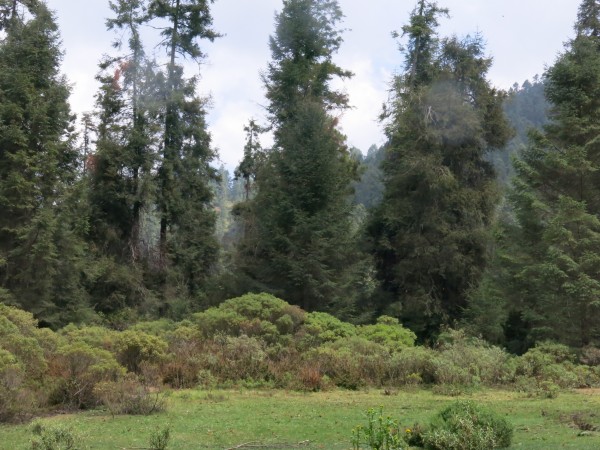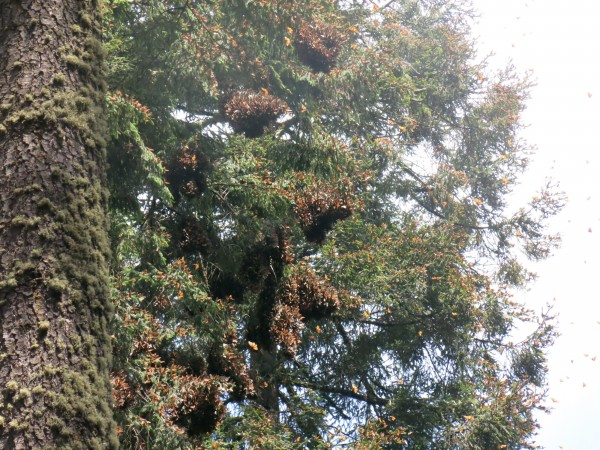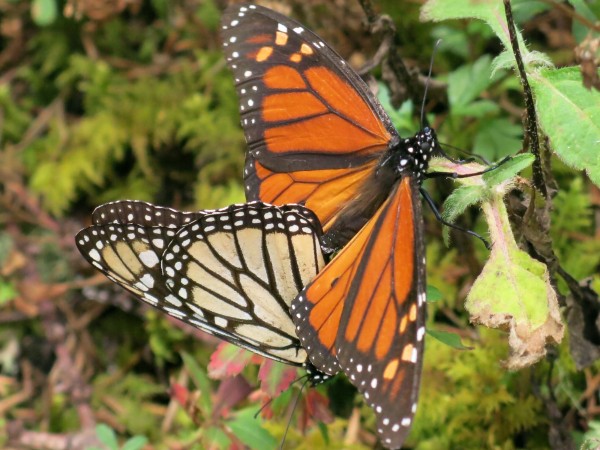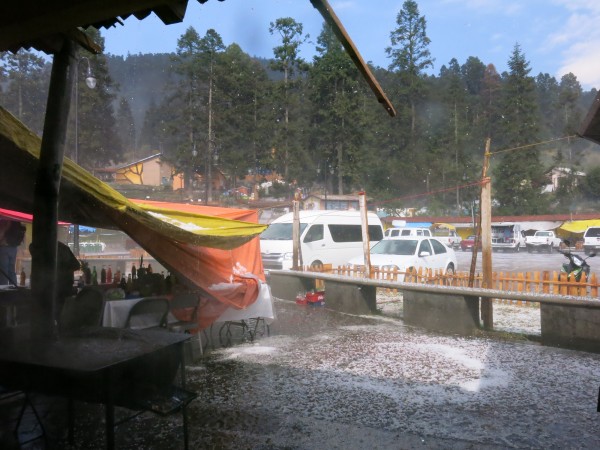News from El Rosario
Monday, March 5, 2018
Dear Friends:
The wonderful performance reported to you last week, was still spectacular but diminished in density by last Friday, March 2nd. But today that spectacular spot is now actually empty as you can see in the images.
Monarchs simply left. Not even humid areas, green bushes and beautiful strong Oyamel trees surrounding the fancy meadow or the fresh-water ponds seem to be attractive to them! A sudden feeling of disconcert invaded me while I asked myself in that very moment at reaching last year’s overwhelming spot: “March 5th… where are they gone now?, what to do?, where to find them?”.
Suddenly the voice of guides addressed for all visitors reaching the deserted spot: “Now come over here, only some meters up-hill into the forest and see."
In I went following the other few tourists. Two hundred meters up-hill into the forest and east at the once-last-week spectacular spot, about a dozen of trees with beautiful healthy clusters of all sizes were there.
I suddenly realized that last night it felt rather chilly in Angangueo, which means temperatures should have dropped even more up here at the Sanctuary. This would explain why Monarchs should have decided to cluster back into the forest right east at the nice meadow here in Llano Cruzado - Barranca Honda site. This is where last week they had been flying down and landing onto the beautiful meadow down-west from this very forest site to which trespassing was forbidden.
The sun shone mostly bright in spite of the presence of some intermittent clouds here and there. Very active nectaring all over is evident, but it is also evident that mating is still very scarce to be seen; one couple here, another one there, and if lucky, a third couple. That is the rate of mating during the day within the 2.5-3-hour time I spent at the site.
The colony is indeed smaller in size now, with 2-3 impressive large hanging clusters in a single tree, a few more medium ones, and many other small here and there. The number of trees not overpassing 15 trees in total, may I assure.
Wonderful burst of Monarchs at the sun shining one after another time made visitors exclaim to themselves overwhelmed at the beauty in front of their eyes, though.
The colony has now split and local Monarch authorities cannot officially say where the other part of the colony may be now settling. Going further ahead in any direction in the forest is not yet allowed.
I left the colony with a feeling of a light disconcerted, since it might be rather a little too early for the colony to have split, since temperatures are still not raising drastically at all, but on the contrary, it is coming gradually, but slowly.
Once back at Llano de los Conejos, I could assure Monarchs will not spot here anymore now at the season’s decline. Monarchs were just never here during the season as they used to for years and years as far back as I can remember until last season.
Is it that humidity, freshness, flowers to nectar and even peace inside the Llano Cruzado - Barranca Honda forest has been much more attractive to them than their traditional settling at Llano de los Conejos?
A warm dinner surrounded by lots of foreign tourists was awaiting at the parking area. All of a sudden, a dark-grey cloud pending upon us released a wonderful rain followed by a really good hail storm, giving an extra experience to foreign visitors at the Sanctuary who did not mind on it, but on the contrary, enjoyed contemplating after having a wonderful sunny day up at the colony!
The day closes and while writing my report on today’s visit at the most populated Sanctuary, a prestigious, educational tv program announces to the Mexican audience, at this very moment, that the official numbers for Monarchs’ population overwintering in the Oyamel forests in México this season has been 14.7% lower than last year, that means 2.48 hectares. These numbers should be reassured by the corresponding alternative maximum authorities on the matter within the coming hours for all of you in the United States and Canada, specially.
Meanwhile, the colonies at both Sanctuaries seem likely to continue presenting important possible, sudden changes in weather at the region, behaviour in colonies, re-location, perishing, density in population and mating rates.
The approximate number of collected tags by the three main collectors from Monarch Watch at both Sanctuaries this year has been 565 and local residents should continue finding and keeping them once the season is over for them to be allowed to go into the core of the colony to sort out among the dead Monarchs population on the ground.
The peak of the season -- even though rather short in itself and even though the density in population seemed likely to be hardly higher than last year’s -- has been simply spectacular for the immense number of visitors coming to contemplate the extraordinary phenomenon this year.
An intense rain followed by a considerable hail storm surprised us all at leaving the Sanctuary obliging us to hurry back home after a wonderful day today.
A close and accurate follow-up should tell us much more of what is left to be seen over the days to come.
Estela Romero
Journey North
Angangueo, Michoacán
México.

